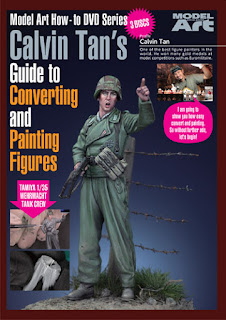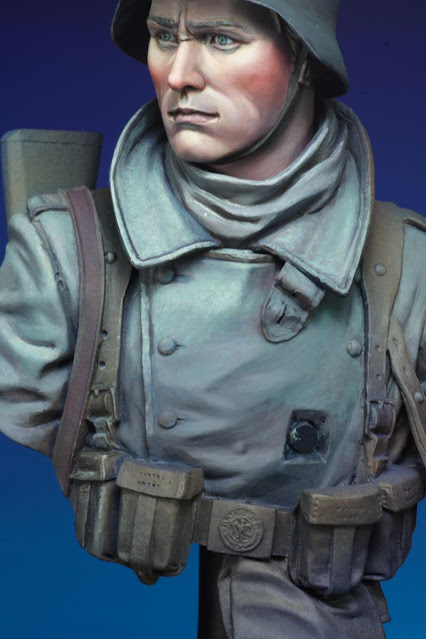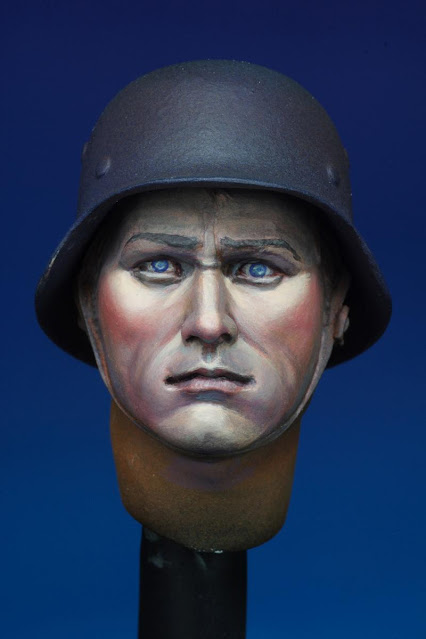Alpine Miniatures - Razvedchik, Operation Bagration, 1944
.
Concluding the box art assignment on the Razvedchik pair for Alpine Miniatures, here is the first installment on the low down of the painting process.
Next, a solution of water and paint retarder was applied.
A mixture of Jo Sonja Carbon Black, Red Violet and Cadmium Orange for the brown sections of the camouflage was applied over the wet ground. The extended drying of the paint retarder solution reduces brush strokes as it allows the paint to evenly level out.
The color for the olive-green sections of the amoeba camouflage were mixed from Titanium White, Hookers Green, Cadmium Orange and Red Violet. They were painted in whilst the brown sections were wet. This not only allowed corrections to be made within a single layer, reducing an unnecessary build-up of paint, but also helped simulate both dirt and shadows in that same step. Other colors such as Prussian Blue and Cadmium Orange were also dabbed on straight from the tube and mingled in (alla prima) to create more subtle variation of tones and hues.
Bob Ross
This is all for now. Until the next installment.
Cheers,
Calvin
























































